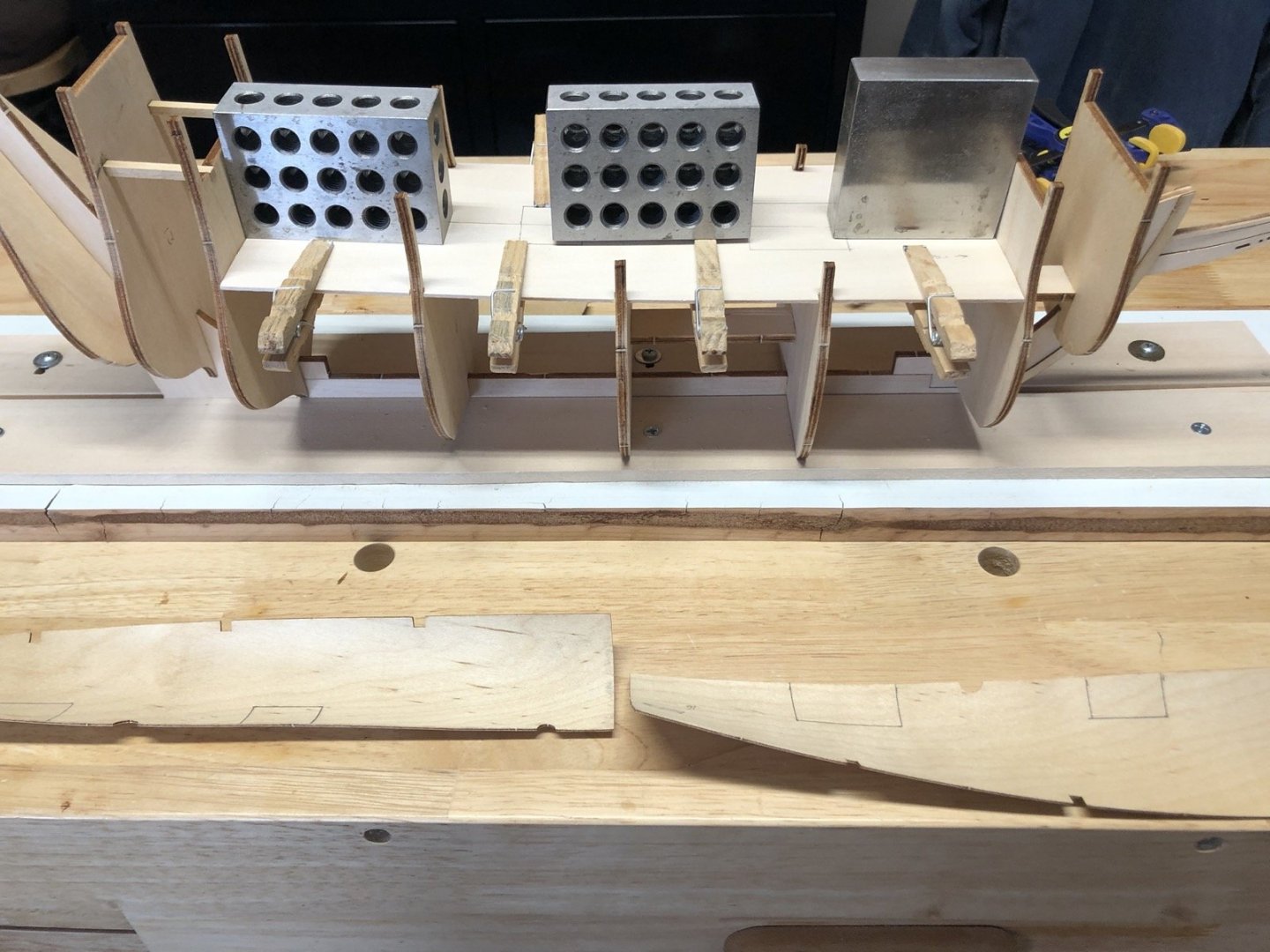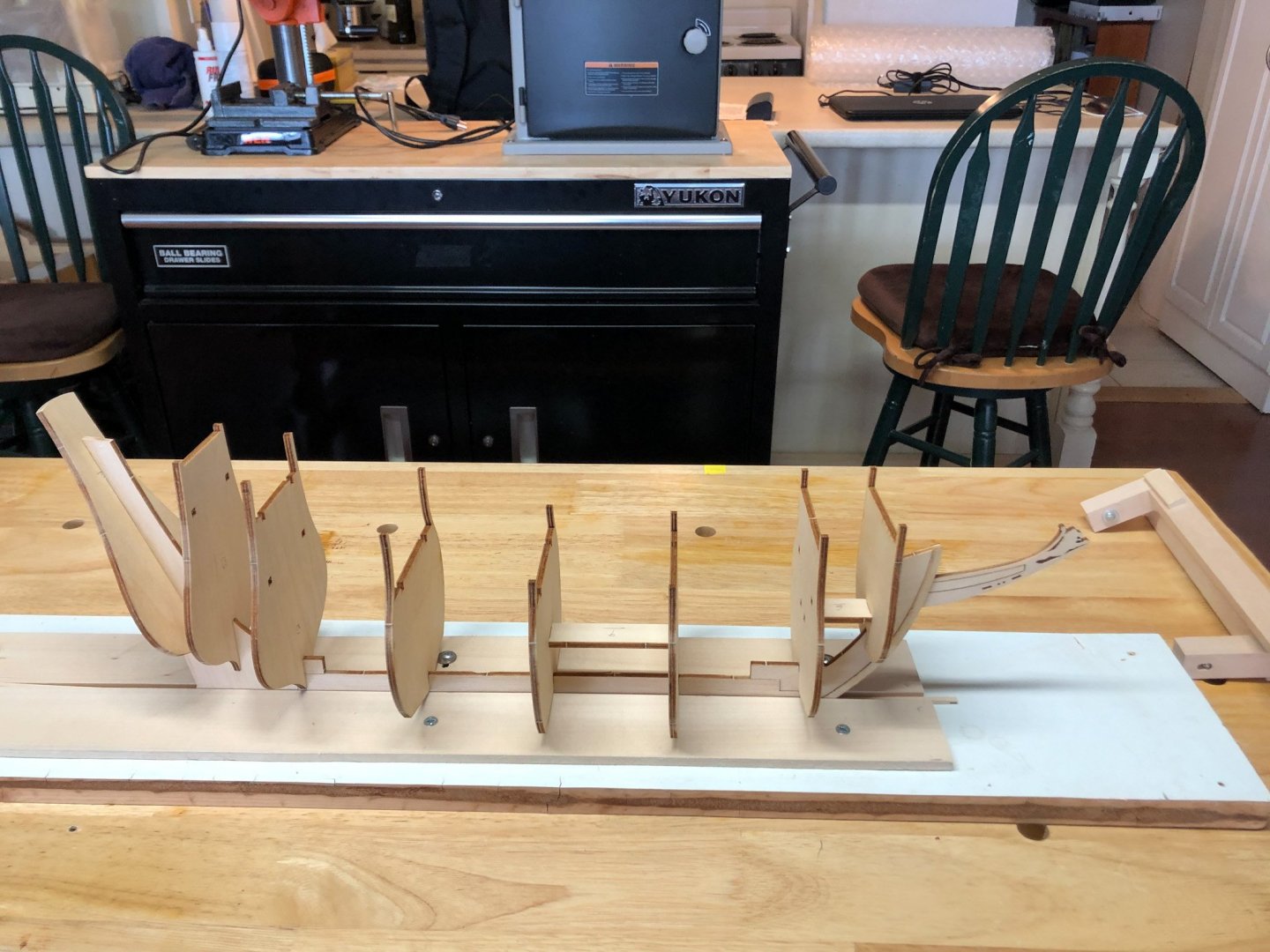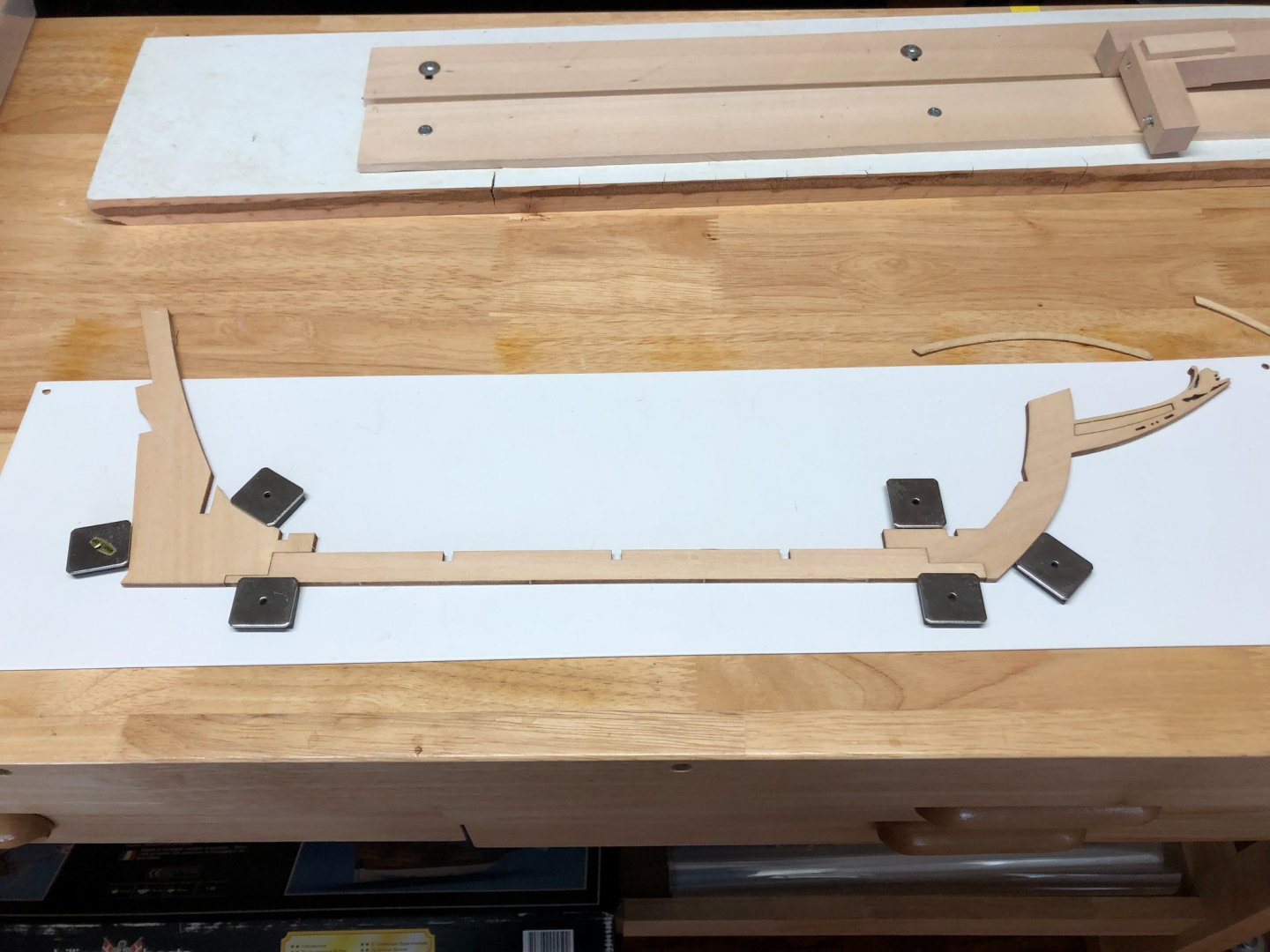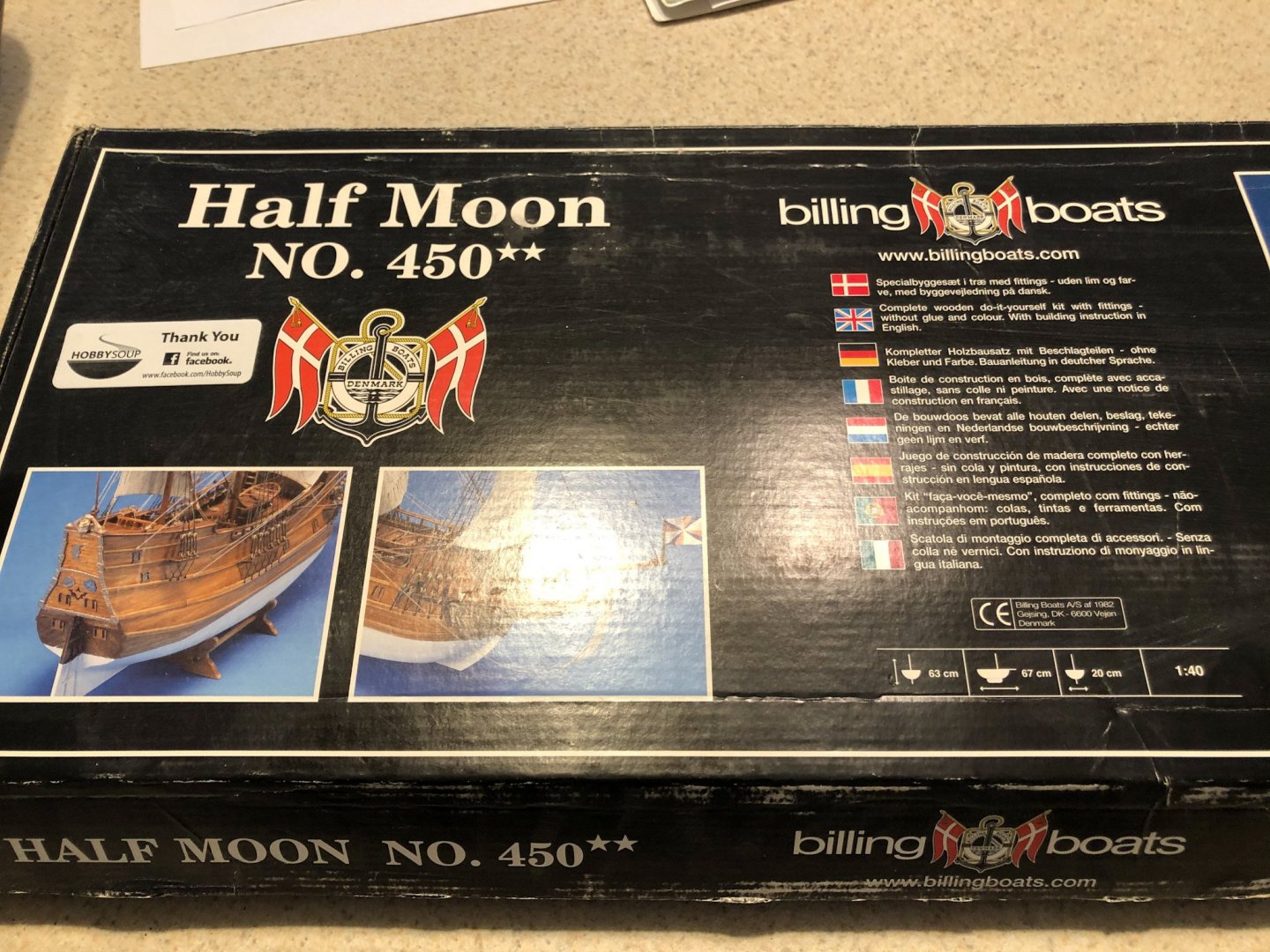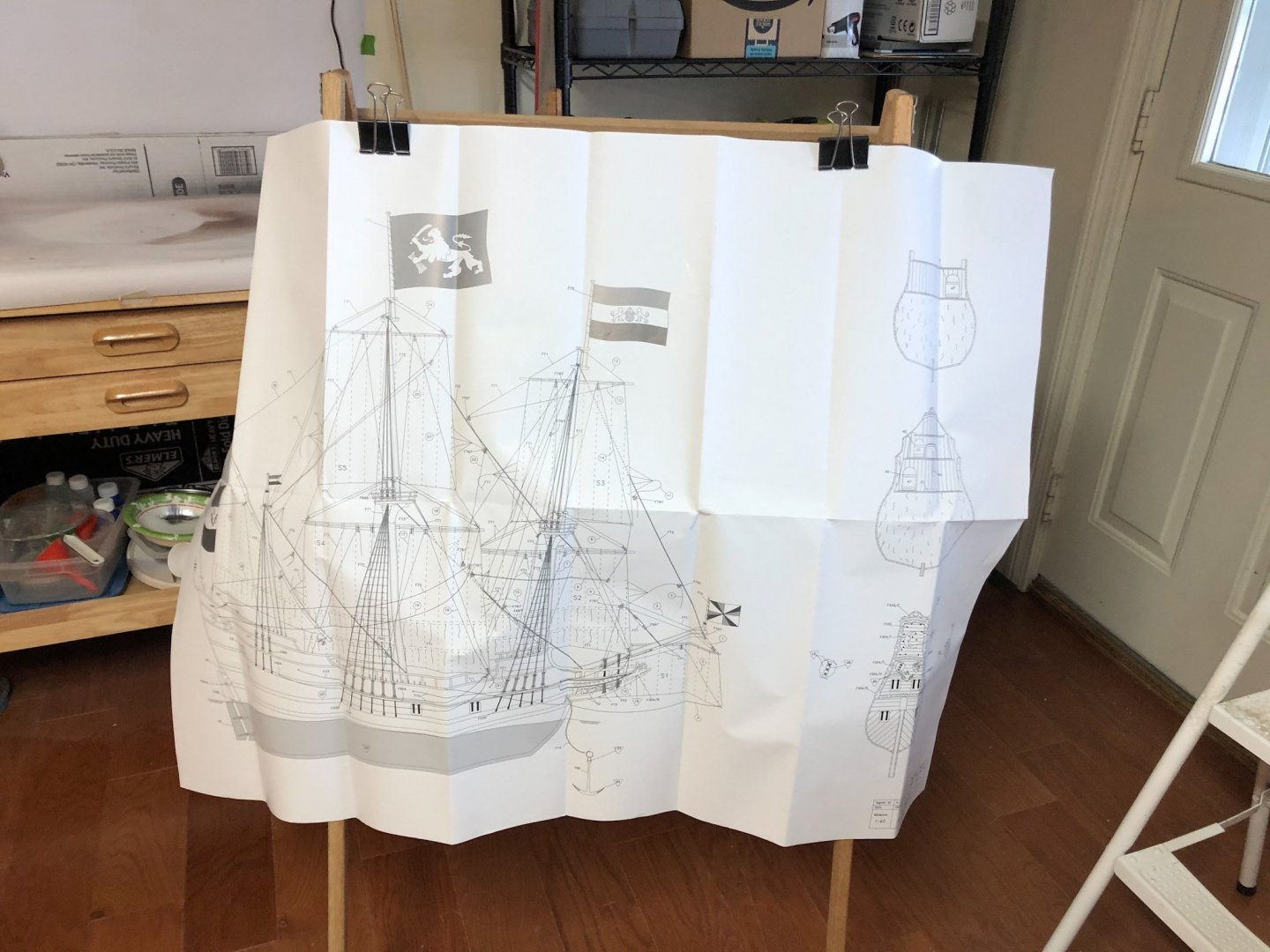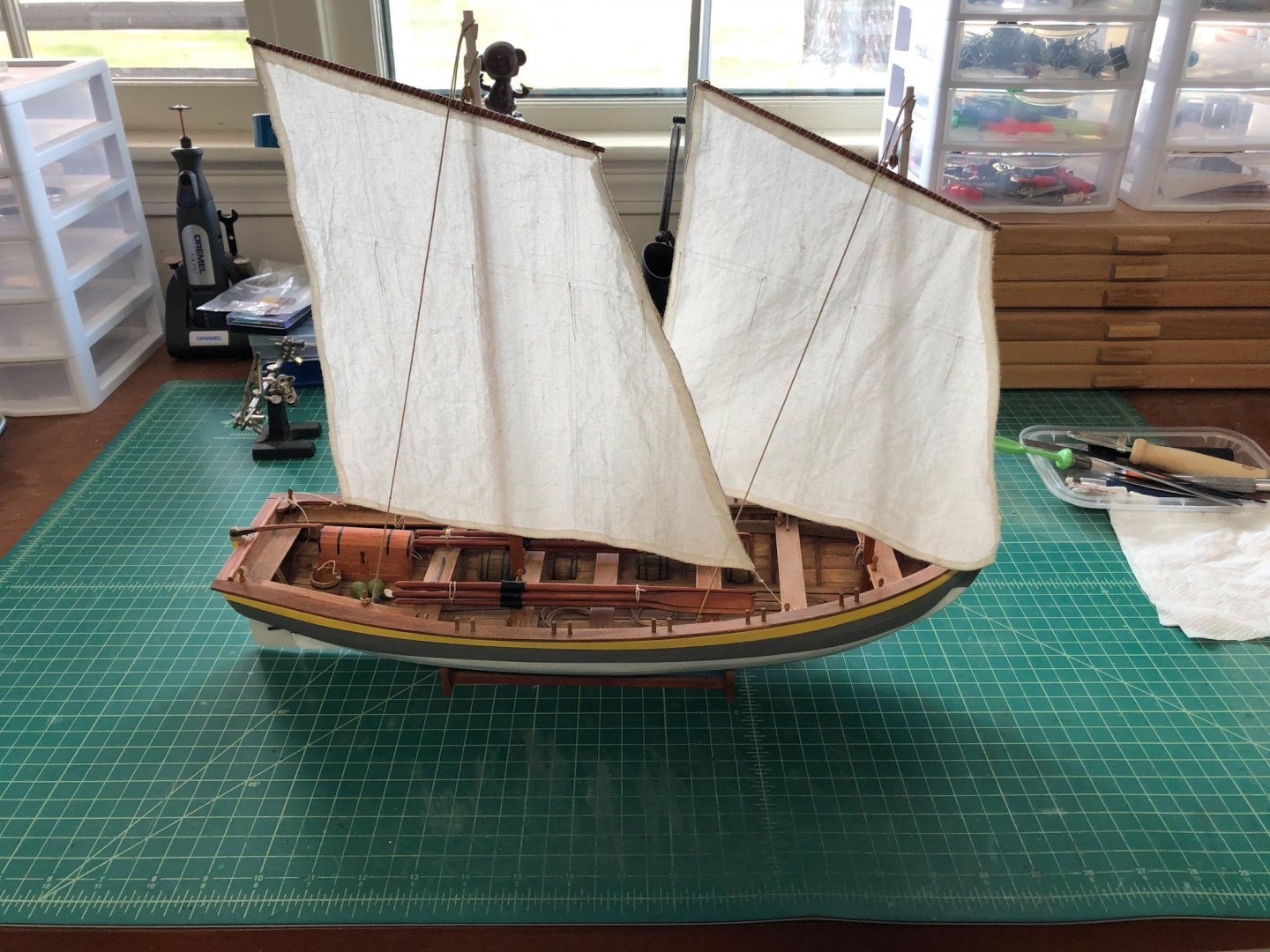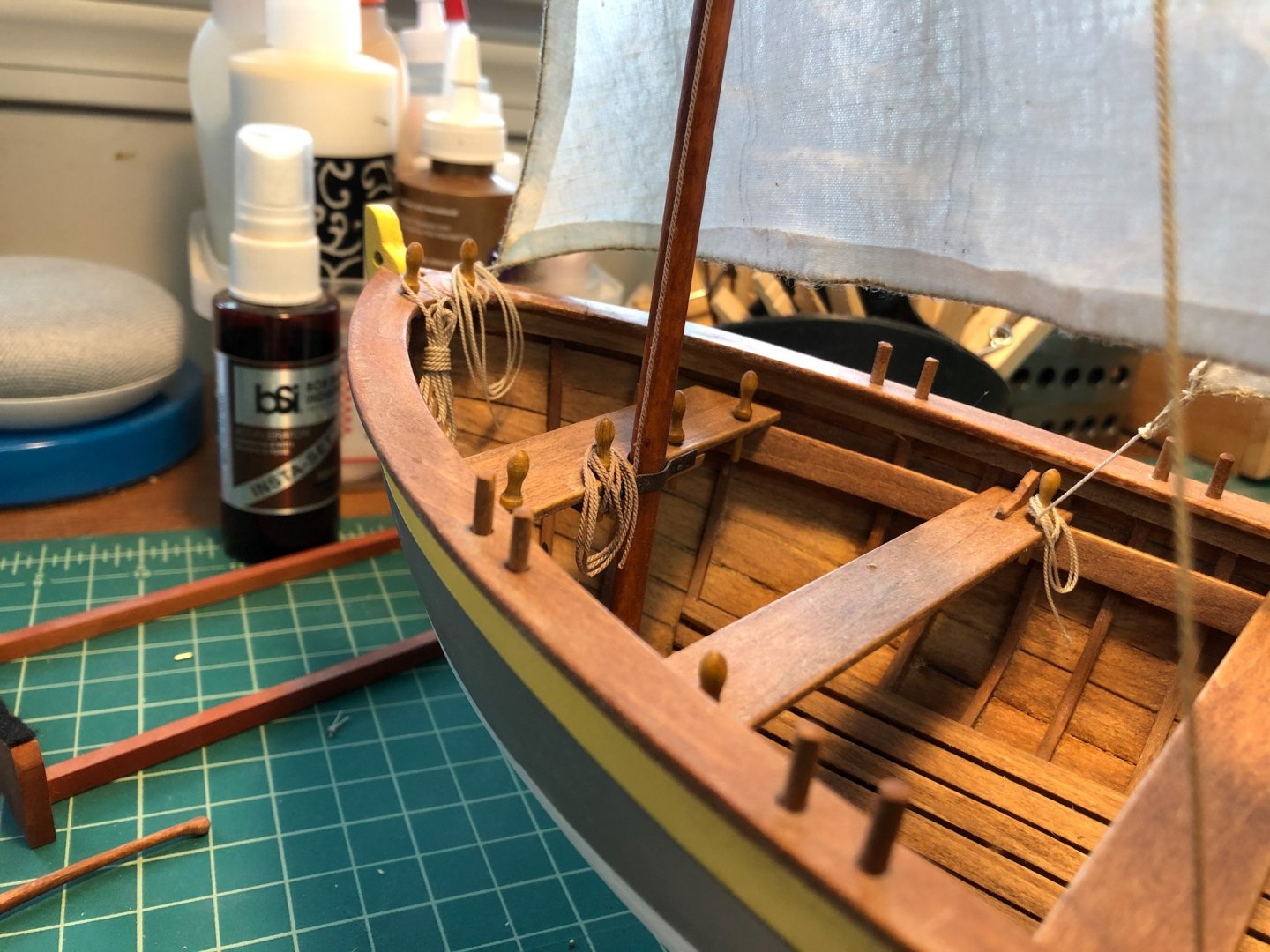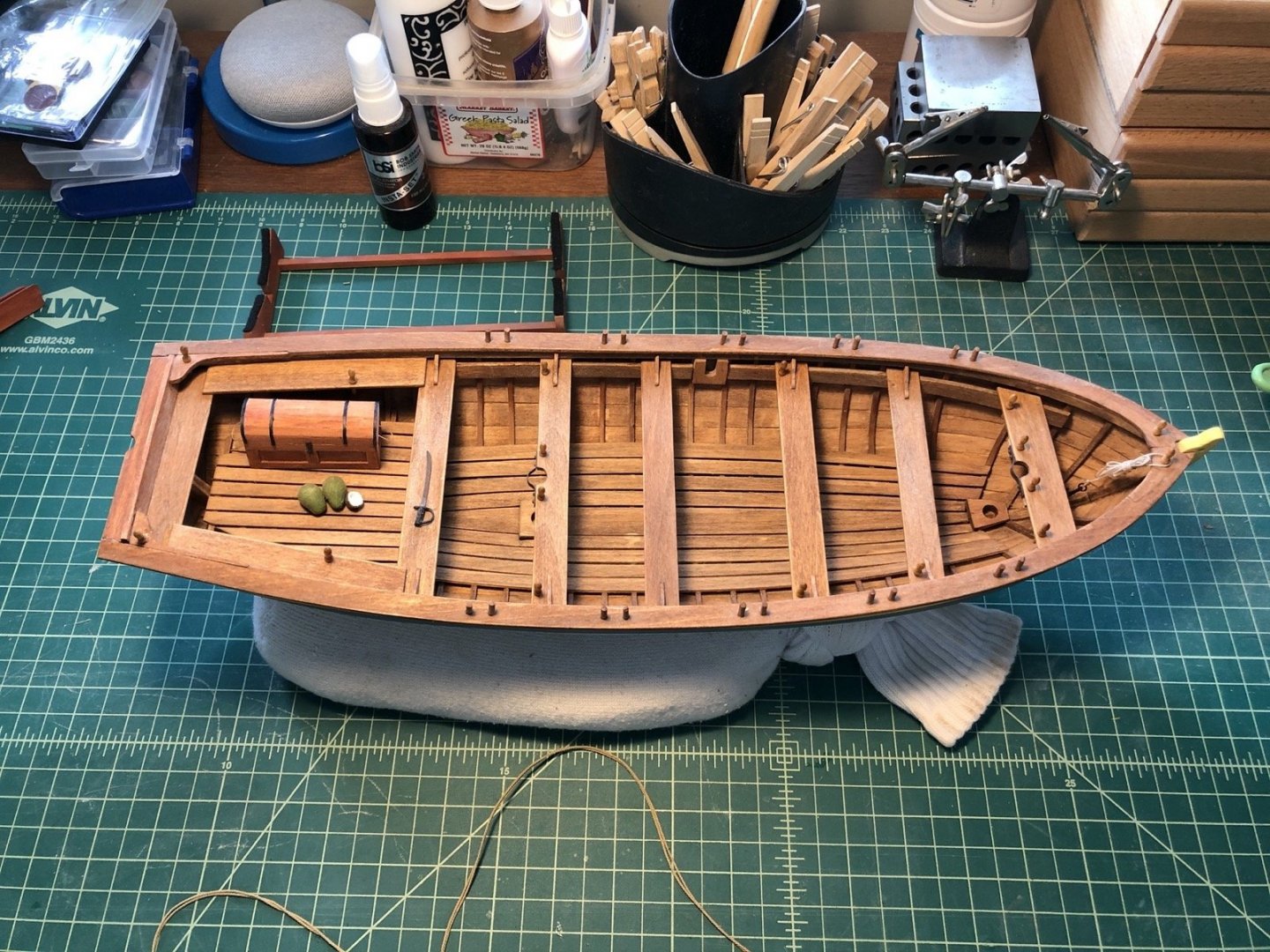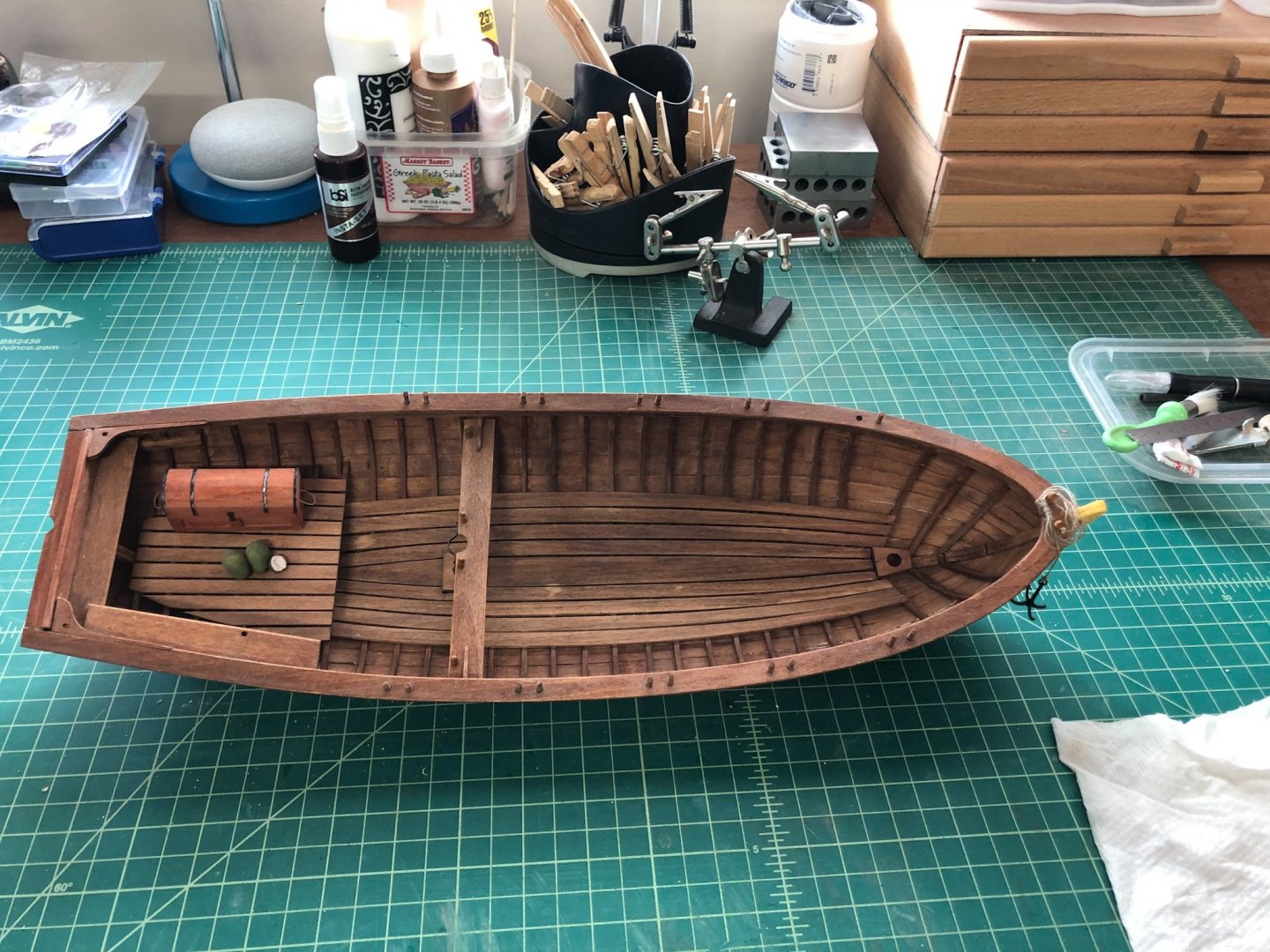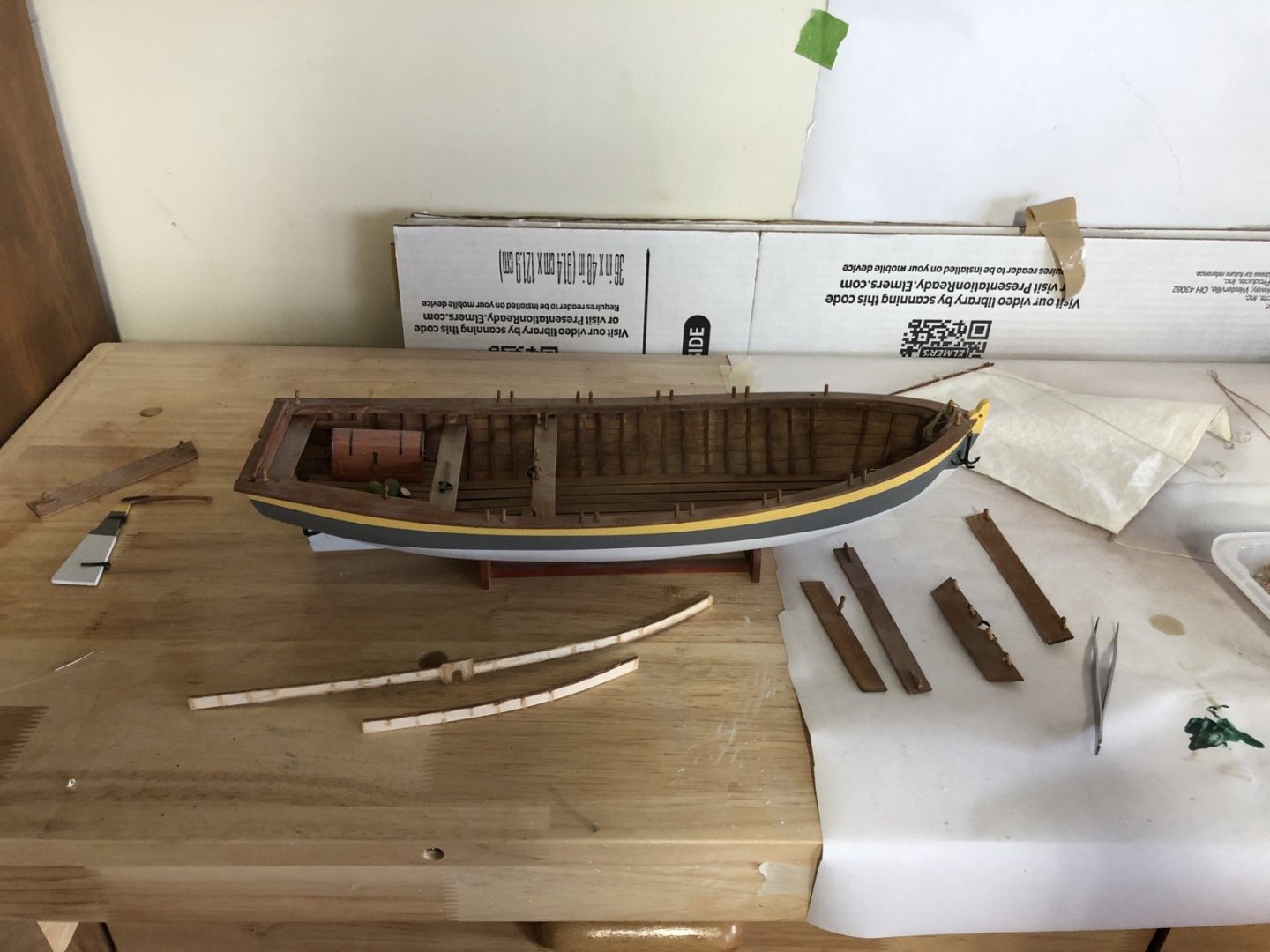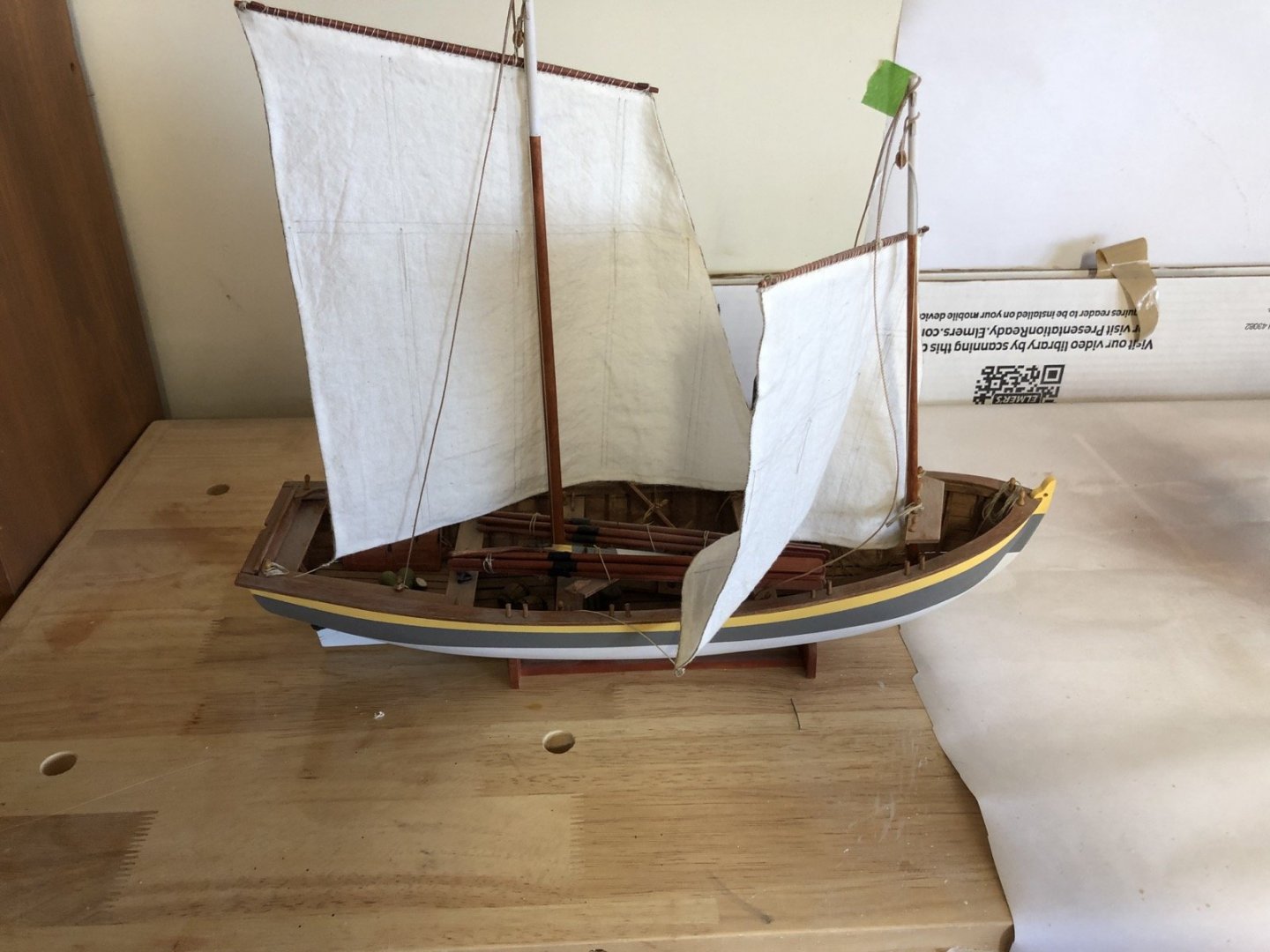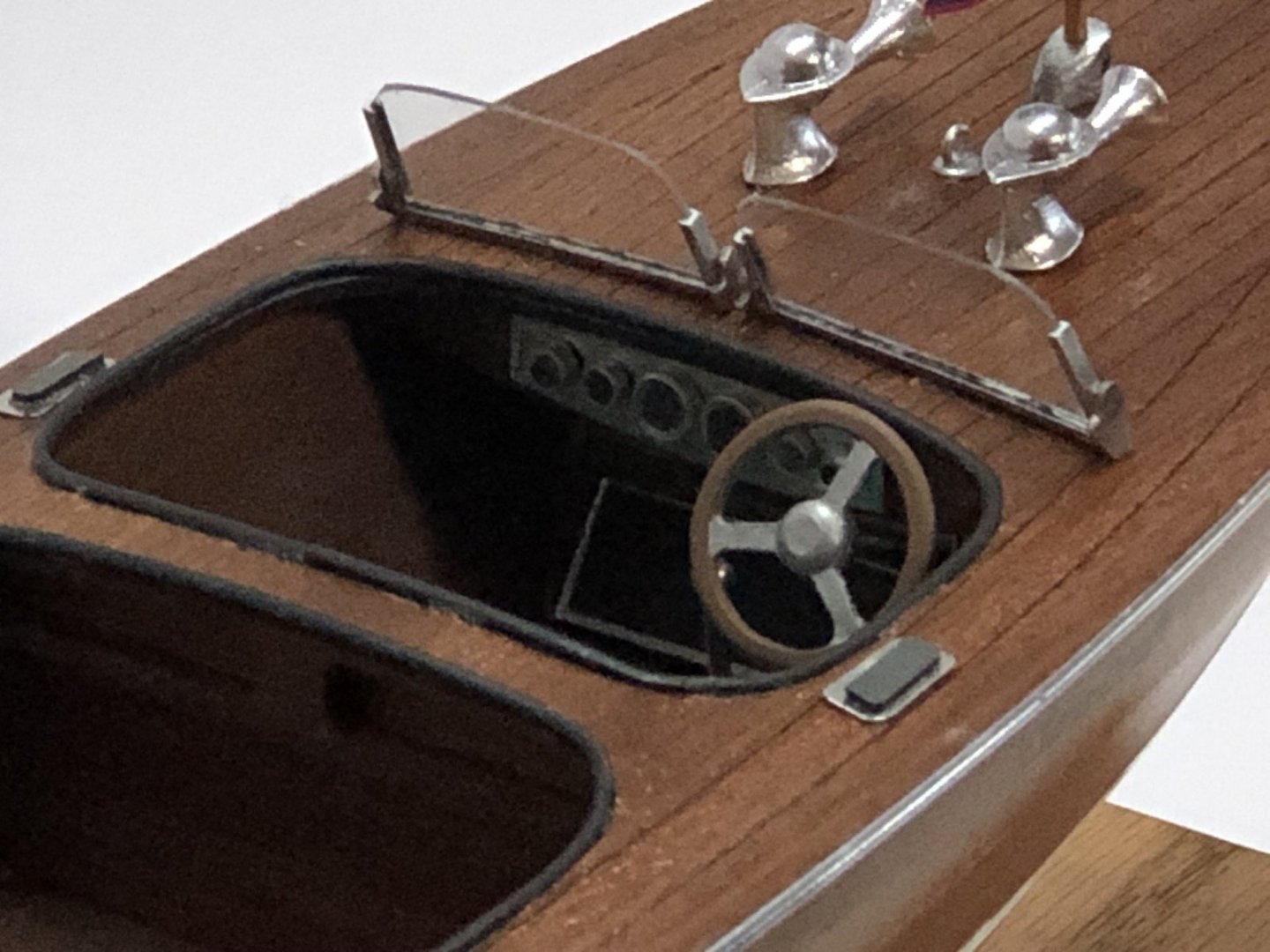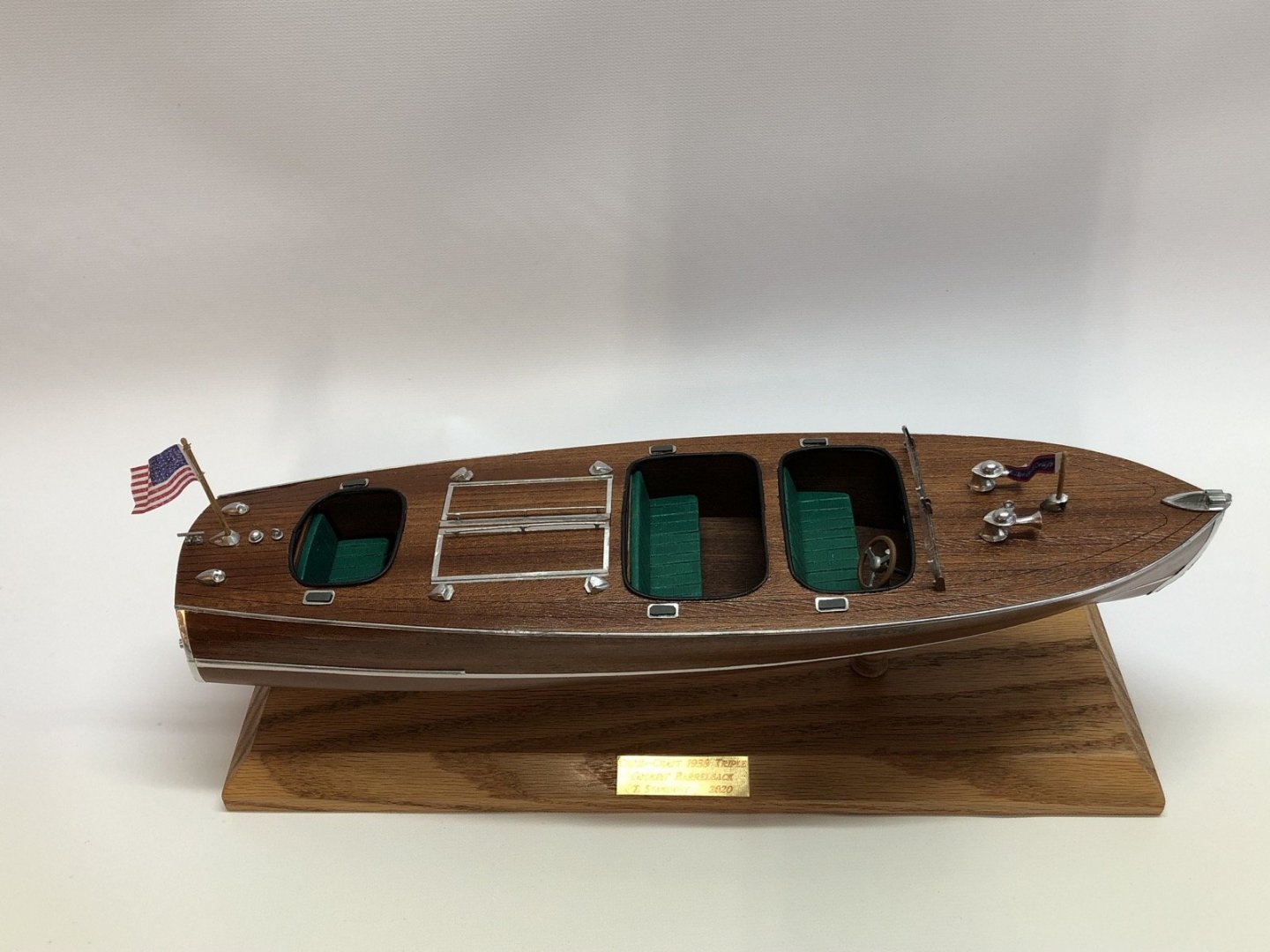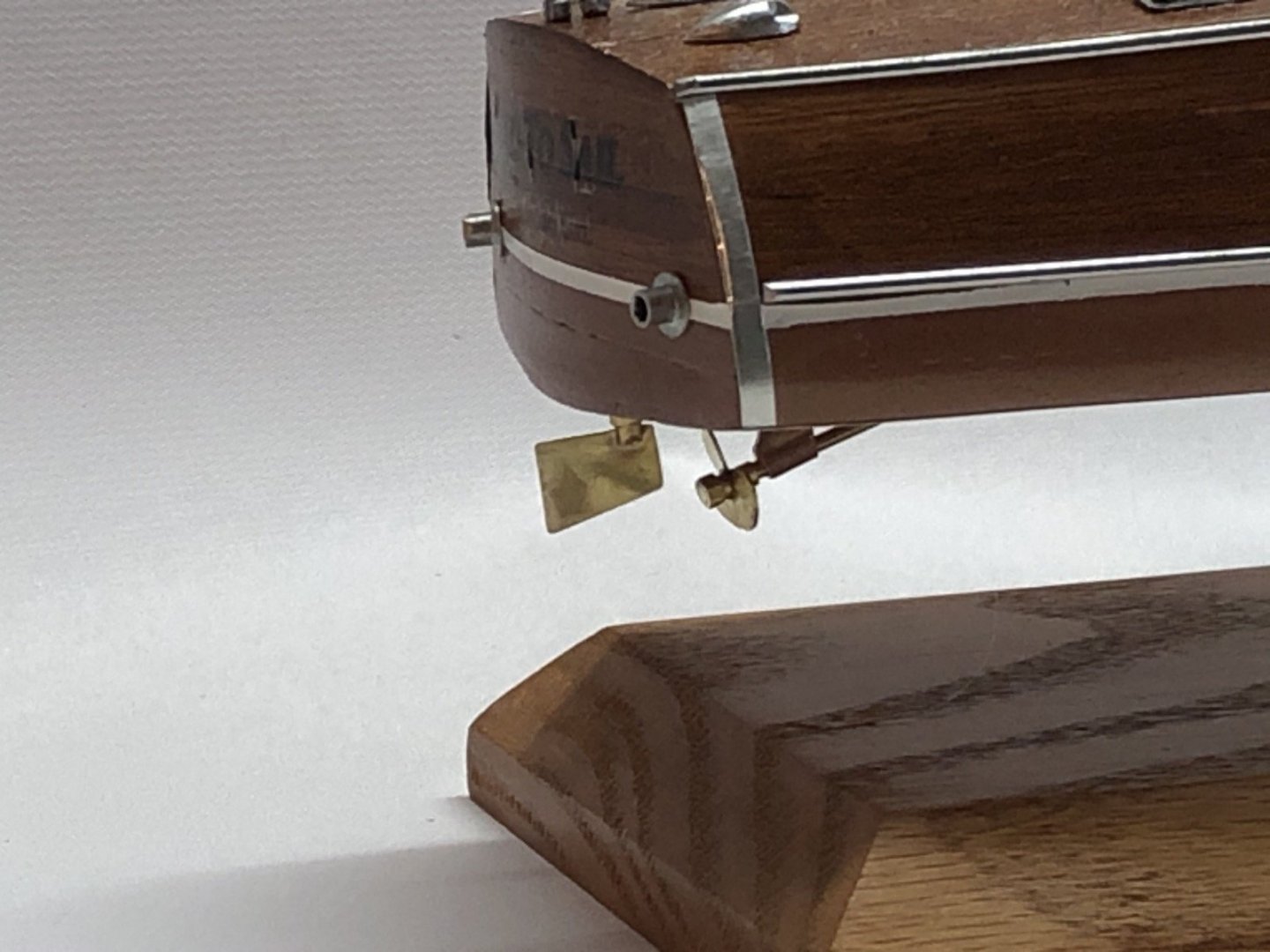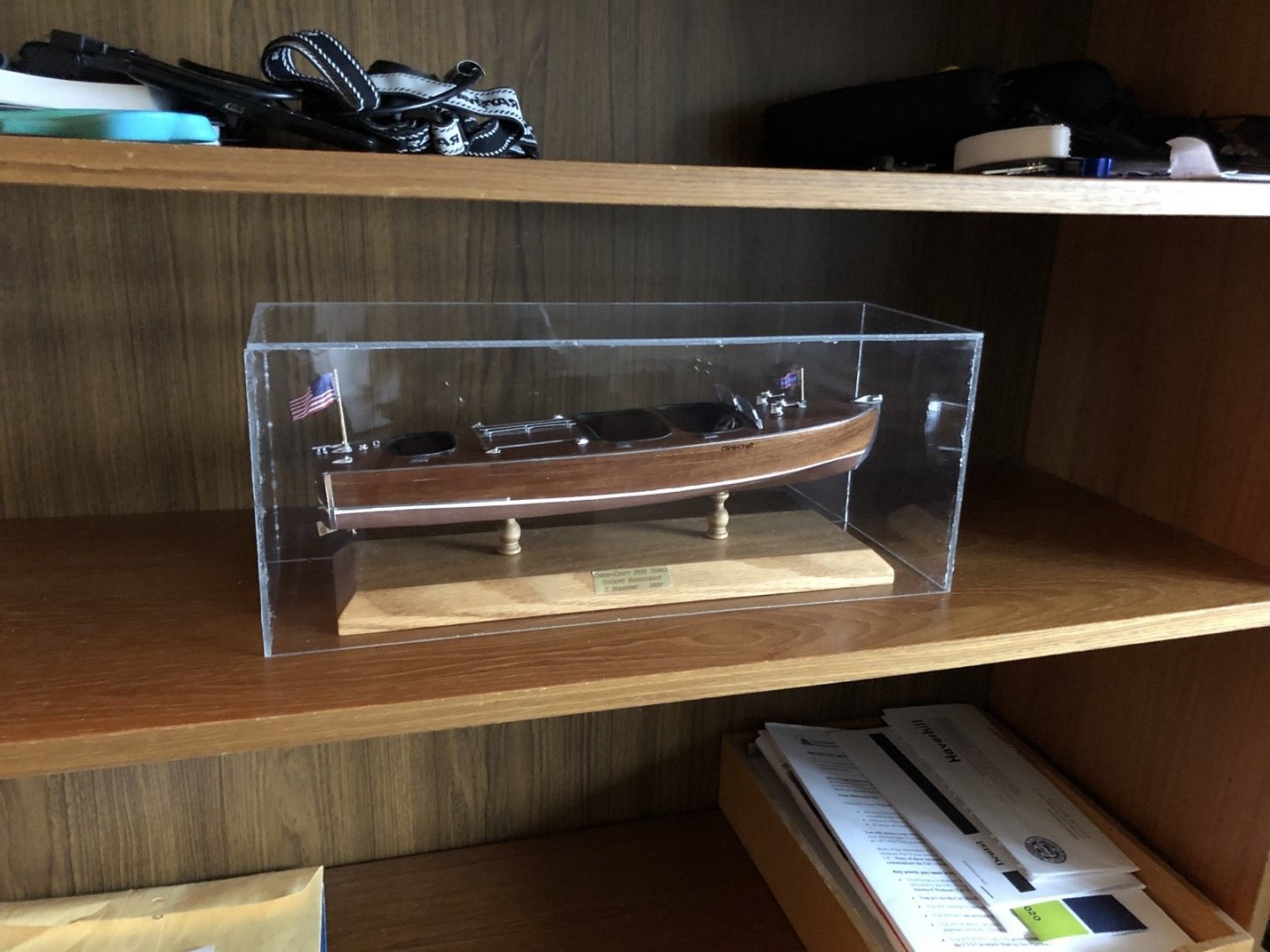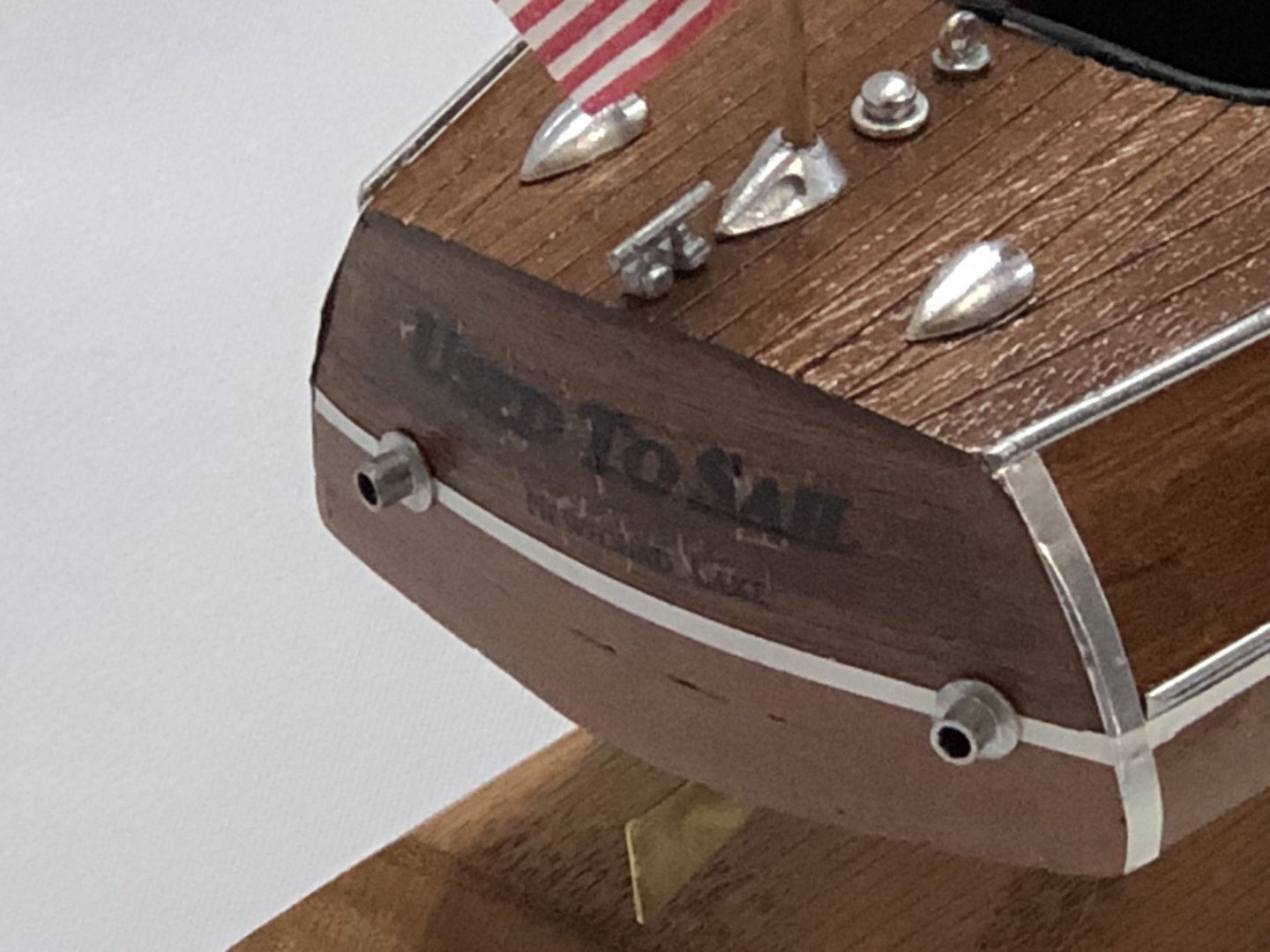-
Posts
2,405 -
Joined
-
Last visited
Content Type
Profiles
Forums
Gallery
Events
Everything posted by usedtosail
-
The NRG has a planking project that you can get. There is a great build log here to go along with it.
- 36 replies
-
- chris-craft 1956 capri
- dumas
-
(and 2 more)
Tagged with:
-
My attempt to straighten the deck pieces just made them worse so I made new ones from some 1/16" basswood sheet and glued them in. They are actually wider than the bulkheads at each end, as were the original pieces, so they will need to be sanded back during the fairing process. I think I can still use the other deck pieces but if not I'll do the same for them.
- 135 replies
-
- billing boats
- half moon
-
(and 1 more)
Tagged with:
-
I forgot to mention why I am building this kit. Even though I have lived in the Boston area most of my adult life, I was born in the New York City area. I built the Constitution because it is such an icon in the area, so I thought to build the Half Moon as it was the ship that Henry Hudson used to explore what is now New York. My next build will most likely be tied to New Hampshire, which is where I live now. The instructions for this kit are horrible. It is lucky that I have build logs like Popeye's to use because otherwise I would be stumped on many steps. I have glued the bulkheads to the keel and added the support pieces to give them some strength. The next step is to add the deck pieces but they are all warped, so I soaked them in water for about 15 minutes then placed them under some flat boards with weights on top. We will see how they come out.
- 135 replies
-
- billing boats
- half moon
-
(and 1 more)
Tagged with:
-
Thank you maturin. I can only hope. I test fit the bulkheads to the keel and they all fit very well without any sanding of the slots. I marked the bottoms of each bulkhead on each side of the keel to use to mark off a rabbet but I haven't decided if I will carve one yet. I was very confused about how the planking would go along the keel but Popeye's build log has some excellent pictures of how he did it so I am good to go now. Thanks Popeye!
- 135 replies
-
- billing boats
- half moon
-
(and 1 more)
Tagged with:
-
I started by cleaning up the keel pieces and bulkheads, then I glued the keel pieces together using a magnetic board to hold them together.
- 135 replies
-
- billing boats
- half moon
-
(and 1 more)
Tagged with:
-
I bought this kit many years ago and it is now at the top of the pile - actually it is the last kit in the pile for now. Here are some pictures of the box and contents. The wood looks OK as do the larger laser sheets. The thin sheets are a bit warped so I may have to remake some pieces. There is just one two-sided plan sheet but it is a real plan and not an isometric view. There are some plastic trim pieces that I am not thrilled about but I'll deal with them when the time comes.
- 135 replies
-
- billing boats
- half moon
-
(and 1 more)
Tagged with:
-
Thanks Cleat. It is the same copper tape supplied in Model Expo kits for copper plating hulls. You can also get it at stained glass shops as it is used to wrap around glass pieces so they can be soldered together. Amazon has it too as Copper Foil tape.
-
Just a quick little update. I really didn't like the edges of the Plexiglas case so I took some copper tape and wrapped it around the edges. I think it looks much better.
-
- 153 replies
-
- model shipways
- bounty launch
-
(and 1 more)
Tagged with:
-
I put the masts back in and added the new shrouds. I then replaced all of the lines on the sails with better rope and hoisted them onto the masts. I arranged them differently than they were before but I think it gives a better view into the boat. I was able to wrap all the excess lines onto the belaying pins making rope coils from the actual lines so I did not have to make any separate rope coils. I used micro clips to hold the coils together and weight them down then I brushed diluted white glue onto them. I am really pleased with how this new version is coming out.
- 153 replies
-
- model shipways
- bounty launch
-
(and 1 more)
Tagged with:
-
That's a good idea Keith. I will look into that.
- 153 replies
-
- model shipways
- bounty launch
-
(and 1 more)
Tagged with:
-
I glued all the cleaned up thwarts back in. I made new shrouds using rope that I made instead of the crappy rope that the old shrouds were made from. I used some crappy looking cotten rope from some old kit and spun it up on the rope walk to make a thicker rope, which looks really good. I also replaced the anchor rope with some rope I had made for the Constitution. Again, it is much better than the crappy rope that came with this kit.
- 153 replies
-
- model shipways
- bounty launch
-
(and 1 more)
Tagged with:
-
The filler could been seen from inside the hull so I touched it up with some Cherry strain. I also touched up the black paint on the toolbox straps. I then have the white part of the hull a couple of coats of thin white paint. When that dried I glued the thwart supports back into the hull.
- 153 replies
-
- model shipways
- bounty launch
-
(and 1 more)
Tagged with:
-
I started out by just separating the loose parts. For the rigging, I was able to loosen up the lines around the belaying pins so I could remove the sails with the rigging intact, at least for now. I then re-glued the aft corner that had come loose. You can really see how dusty it is inside the hull in that last picture. So the next step was to clean all that dust out. I used Q-Tips with a little water and wiped all the surfaces, which worked nicely. The next step was to fill the cracks in the hull with wood filler. This will be sanded off when it dries and I will then touch up the white paint. In the mean time I am cleaning the dust off the detached pieces and figuring out if I will re-rig the masts and sails.
- 153 replies
-
- model shipways
- bounty launch
-
(and 1 more)
Tagged with:
-
Well, the Bounty Launch got launched. It was the only model in the house not in a case and a cushion caught the mast as the Admiral was getting it. Not a huge deal because I could tell it was not aging well and needed some attention anyway. Here is how it looks back on the bench after the accident. Nothing is actually broken. Most of the thwarts have been dislodged due to the pull of the rigging. I will probably take the time to redo all the rigging as I have better rope I can use now. The stern starboard corner is loose but it was like that before the fall. There are also a few cracks in the planking that need some attention. I can also clean out all the dust that has accumulated over the years inside the hull. Luckily this happened just after I finished the Chris Craft and before I have started the Half Moon.
- 153 replies
-
- model shipways
- bounty launch
-
(and 1 more)
Tagged with:
-
Hi Dave. I just found your build log and will follow along. You are doing a great job. I really like the look of your copper plating. If I may give you one note of caution is that to make sure the chain plates will take the strain of the rigging just being glued to the hull, unless the lower deadeyes are held securely in the channels so they would take the strain.
- 55 replies
-
- constitution
- model shipways
-
(and 1 more)
Tagged with:
-
Thank you cleat and Jeff. The case is 1/8 inch Plexiglas that I had left over from a previous project. In the past I have cut it on a table saw with a blade with a lot of teeth per inch. For this one I just used my table top band saw with a normal blade. The edges were a little rough but some light sanding took care of that.
-
Thank you Chris and Popeye. Popeye I thought you had finished your Half Moon. Don't start it back up yet. It's going to take me a while to get to where you are so finish up those other projects first.
-
Thanks cleat and Popeye. This was a fun little project despite the issues with the mahogany. Adding the name to the back was a small project in itself. The first round of decals I made up didn't show at all on the hull. I was going for some fancy gold lettering but the printer just couldn't get it dark enough. For the second attempt I tried white letters which again did not show up well. I finally made some decals with black letters that did show up. The logos are also done in black so they can be seen. I used a product called Micro Set to place the decals and they looked pretty good, but then I tried a product called Micro Sol that was supposed to make them set even better. It did the opposite and bubbled up the decals and made them very soft so that trying the flatten them messed them up even more. So I took those off, made another set and placed them with just the Micro Set. They are not as nice as I would have liked but they will do. Here are some pics of the completed model, and I will add some more to the gallery. Now before you think I am too narcissistic, my screen name actually came from the name of my first full size power boat. I had always had sailboats before that so I was more "used to sail" than I was power. So I had to name my first power boat model the same.
-
Thanks Cleat, Popeye, and stuglo, and the likes. For my next build I chose the Billings Half Moon. I was inspired by Popeye's and JCT's builds of this ship. I've had the model for a while and it is now at the top of the queue. Still a little more work to do here first though.
About us
Modelshipworld - Advancing Ship Modeling through Research
SSL Secured
Your security is important for us so this Website is SSL-Secured
NRG Mailing Address
Nautical Research Guild
237 South Lincoln Street
Westmont IL, 60559-1917
Model Ship World ® and the MSW logo are Registered Trademarks, and belong to the Nautical Research Guild (United States Patent and Trademark Office: No. 6,929,264 & No. 6,929,274, registered Dec. 20, 2022)
Helpful Links
About the NRG
If you enjoy building ship models that are historically accurate as well as beautiful, then The Nautical Research Guild (NRG) is just right for you.
The Guild is a non-profit educational organization whose mission is to “Advance Ship Modeling Through Research”. We provide support to our members in their efforts to raise the quality of their model ships.
The Nautical Research Guild has published our world-renowned quarterly magazine, The Nautical Research Journal, since 1955. The pages of the Journal are full of articles by accomplished ship modelers who show you how they create those exquisite details on their models, and by maritime historians who show you the correct details to build. The Journal is available in both print and digital editions. Go to the NRG web site (www.thenrg.org) to download a complimentary digital copy of the Journal. The NRG also publishes plan sets, books and compilations of back issues of the Journal and the former Ships in Scale and Model Ship Builder magazines.





